KEENE, Charles Samuel
Charles Samuel Keene was born at Duvals Lane, Hornsey, Middlesex on 10 August 1823, son of Samuel Browne Keene (17 December 1768-3 January 1838), a solicitor of Furnivall’s Inn, London and at Ipswich, and his second wife Mary née Sparrowe (1796-1881), daughter of John Sparrowe (1755-1821) of the old Ipswich family of Sparrowe's House, Buttermarket, they married at Little Wenham, near Ipswich on 27 August 1822. Like his brother Henry Eddowes Keene, he was educated at Miss Johnson's school at Queen's Road, Bayswater, London and, when his father moved to Ipswich, at the Queen Elizabeth Grammar School 1833-1839, then in Foundation Street, Ipswich and on leaving entered his father's solicitor's office. Finding the law uncongenial and with encouragement from his mother to draw, he entered the employ of architect William Pilkington (1758-1848) of Scotland Yard, London. About 1842, Charles was apprenticed to the Whymper Brothers, the celebrated wood-engravers which imposed professionalism and discipline to his work which many other illustrators lacked. Keene must have begun to work as an independent illustrator while still at Whympers, as his frontispiece to 'The Adventures of Dick Boldero' is dated 1842 and was engraved by John Davis Cooper (1823-1904), a fellow apprentice with whom he collaborated. At the end of his apprenticeship Keene produced designs for his first major book, 'The Life and Surprising Adventures of Robinson Crusoe' (1847) and in 1853 was employed to work up sketches by Samuel Read for the 'Illustrated London News' and prepared subjects on Sevastopol for Dickinsons' publications during the Crimean War. In 1851 Keene began to contribute to 'Punch' firstly anonymously, although from 1854 he signed with his initials, but he did not join the Punch ‘Table’ until 1860. On 29 October 1864, on the death of John Leech (1812-1864), he succeeded as chief social cartoonist and contributed regularly to the magazine for the next thirty years. He relied heavily for subjects on his friend Joseph Crawhall (1821–1896), who supplied him with albums of incidents and his collected 'Punch' work appeared as 'Our People' in 1881. Keene worked as an etcher from the 1870s but published few of his plates, landscapes, and figures, regarding the results as a mere hobby and produced very few oils, the most famous of which, a self-portrait, now in the Tate Gallery. Through his contact with the etcher Edwin Edwards, his etched work reached a wider circle and Edwards wife Ruth Edwards printed his plates and entered his works for the Paris Exhibition in 1889 and where they won a gold medal, but John Ruskin (1819-1900) criticised his failure to tackle grander subjects than his ‘cabbies, servant girls, soldiers, or drunks’. From early manhood Keene lived as an eccentric bachelor in various dilapidated rooms and lodgings in London, often separated from a permanent studio, moving from an attic above the Strand to Clipstone Street, then to 55 Baker Street, 11 Queen's Road, West Chelsea, and King's Road, Chelsea. At each of these addresses he surrounded himself with a jumble of artistic props, books, flints, and memorabilia, cooking meat to a cinder on an open fire. A tall, gangling figure in untidy clothes, Keene took a cottage at Witley, Surrey, for some years, but his spiritual home was Suffolk, where he spent long holidays in rented rooms and had a close friendship with the poet Edward Fitzgerald at Woodbridge. Keene's excessive smoking and poor diet led to the gradual onset of heart disease, and he died at his home, 112 Hammersmith Road, London, on 4 January 1891 and buried in Hammersmith cemetery, attended by all his Punch friends. He left over £30,000. (Simon Houfe. The Works of Charles Samuel Keene. 1995).
Works by This Artist
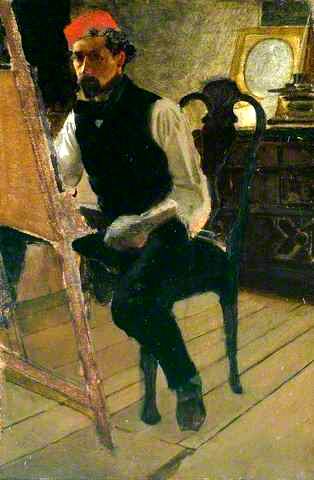
|
Charles Samuel KeeneSelf-portrait |
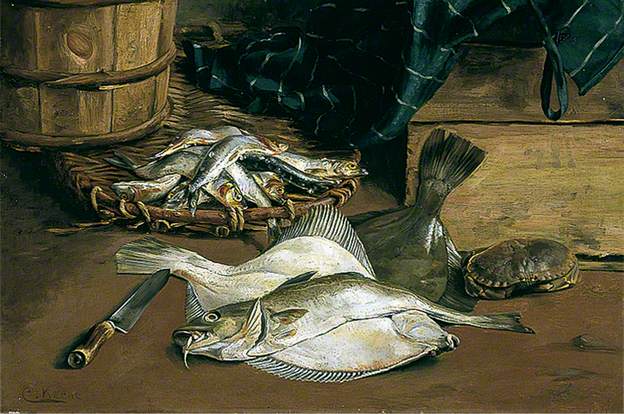
|
Still Life with FishOil on canvas
|
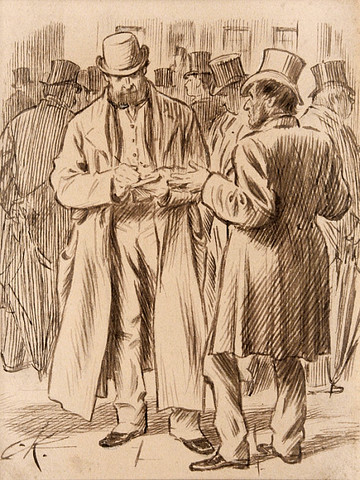
|
On the MartEtching |
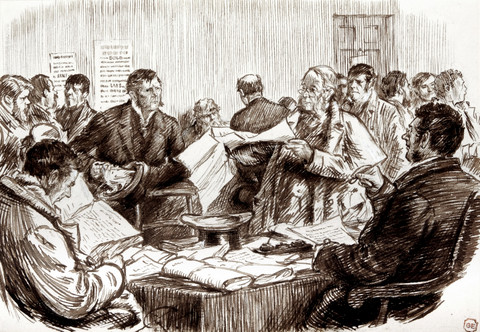
|
Generally Applicable: A scene in an Irish land courtPen and ink |
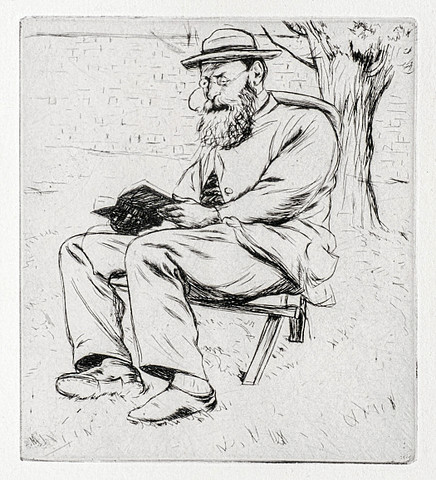
|
Edwin Edwards Reading in his GardenEtching |
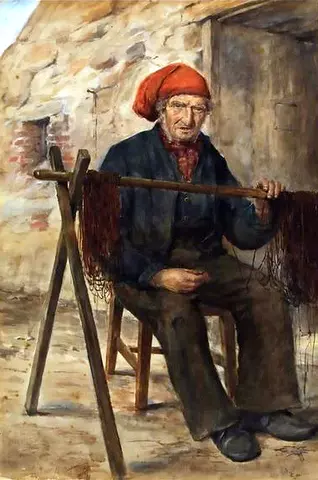
|
Old Johnny Johnstone - Cockenzie 1885Watercolour on heavy paper
|
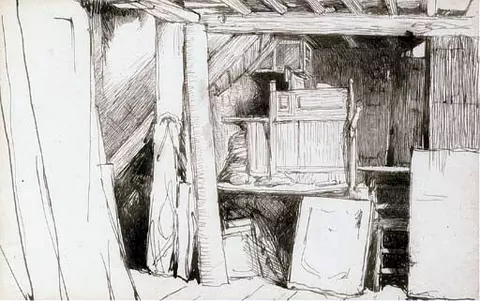
|
Interior of the Artist's StudioPen and brown ink
|
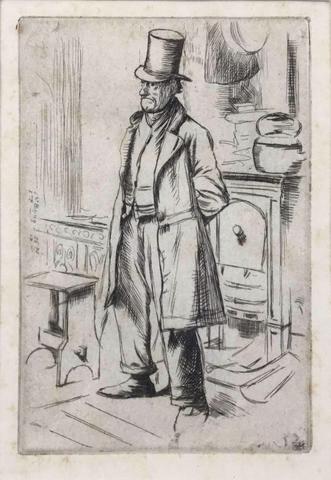
|
Old Man in Top Hat standing before a StoveEtching
|